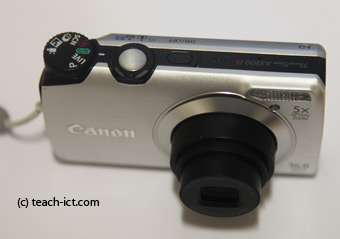2. How they work
Digital cameras work by recording the incoming image on a special electronic sensor called a CCD (charge coupled device). This is placed where the old film used to be in the camera.

Just like a computer screen, the sensor is made up of millions of pixel elements. The difference being that the 'pixels' are now recording light falling on its surface rather than sending light out.
The more pixels within the CCD the better the resolution of the image. A camera is usually specified in terms of 'megapixels' i.e. 1 megapixel is 1 million pixels.
A basic digital camera on a mobile phone is around 2-5 Megapixels, whilst a professional camera, costing thousands, may have more than 28 Megapixels.
The recorded image is stored as a compressed file within the camera, ready to be uploaded. The files are usually JPG files but other formats may also be used.
On the more advanced cameras, the actual raw data from the CCD is stored as a file without any processing, so the maximum amount of image information is available. Remember - a jpg file is compressed, meaning some information is discarded before even leaving the camera.
This raw file can then be uploaded into a professional image processing package such as Adobe Photoshop for maximum quality. The downside of a raw file is that it is much larger than a jpg, so fewer photos can be stored in the camera memory card.
Challenge see if you can find out one extra fact on this topic that we haven't already told you
Click on this link: Digital camera sensors
